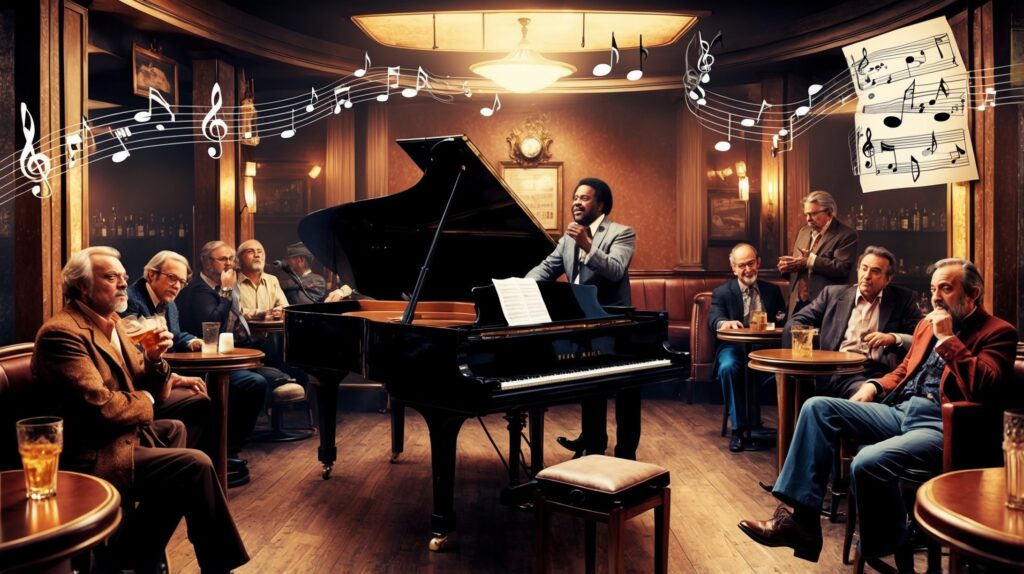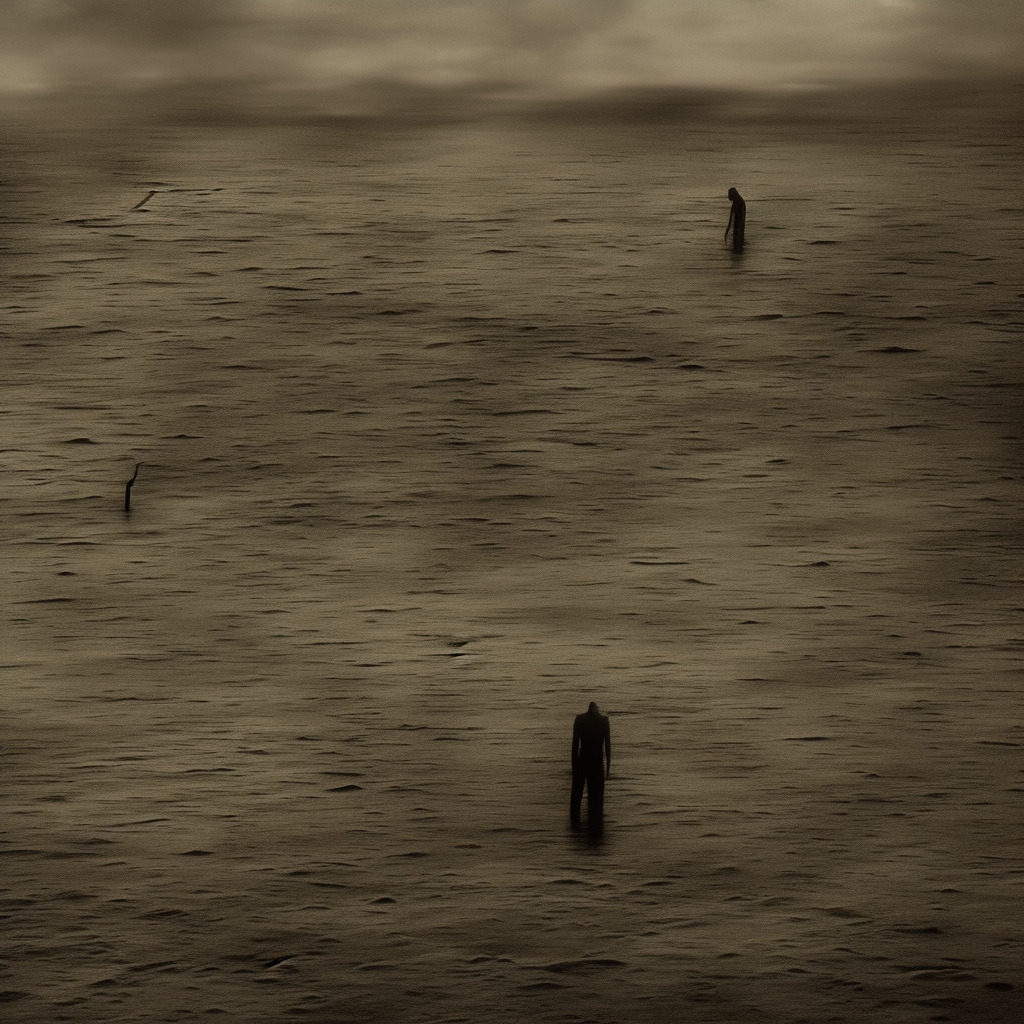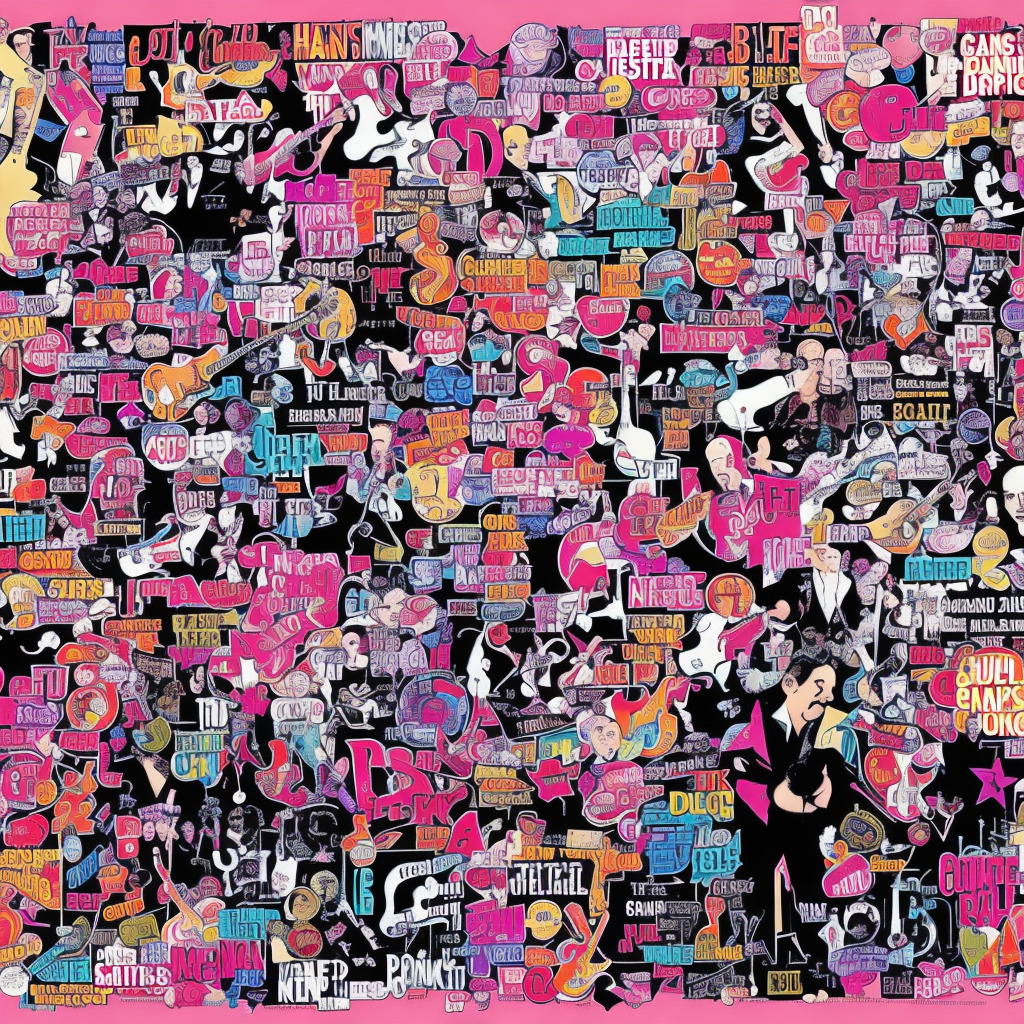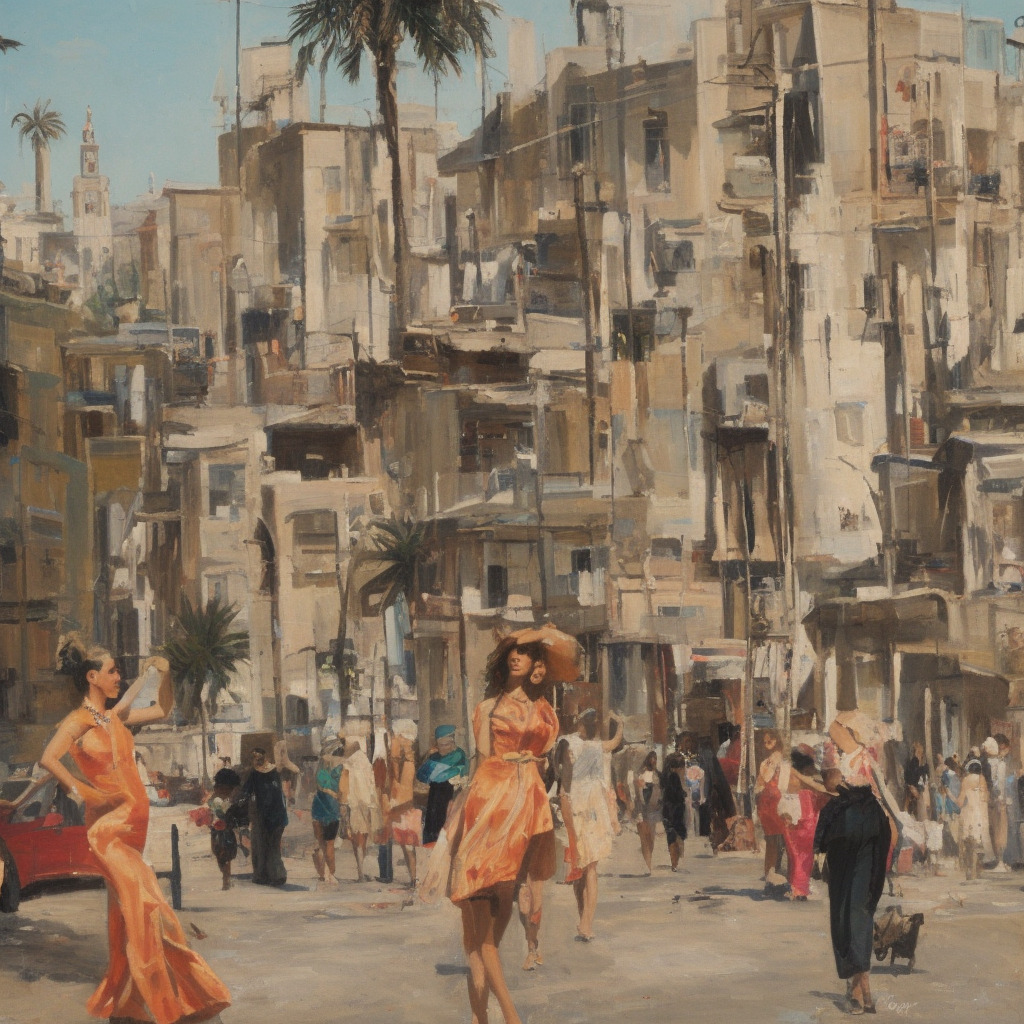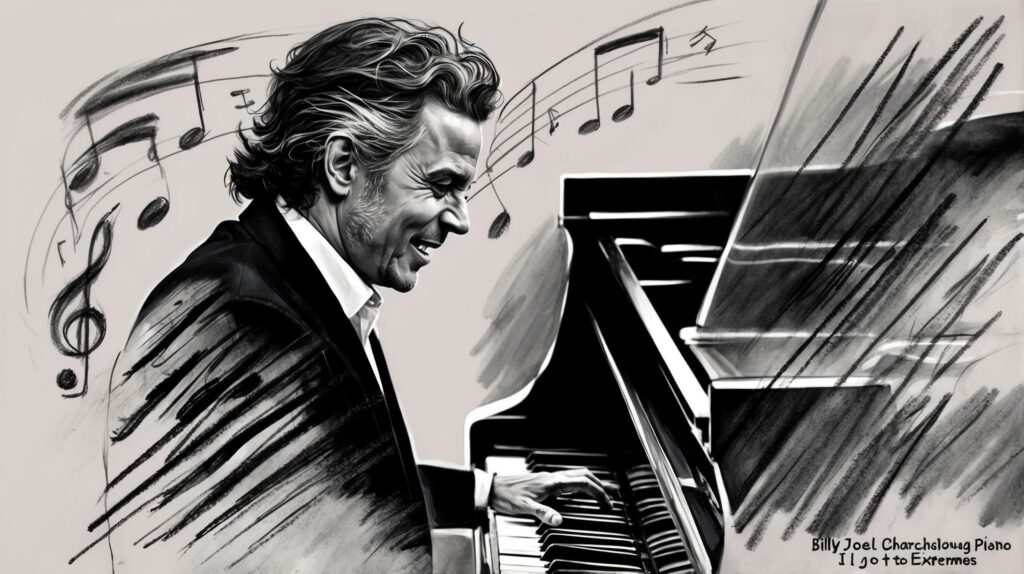The Maestro Behind ‘Piano Man’: Billy Joel’s Story
Dive into the life and artistry of Billy Joel, the musical genius behind ‘Piano Man’. Discover how his early experiences and the era around the song’s release shaped his iconic career.
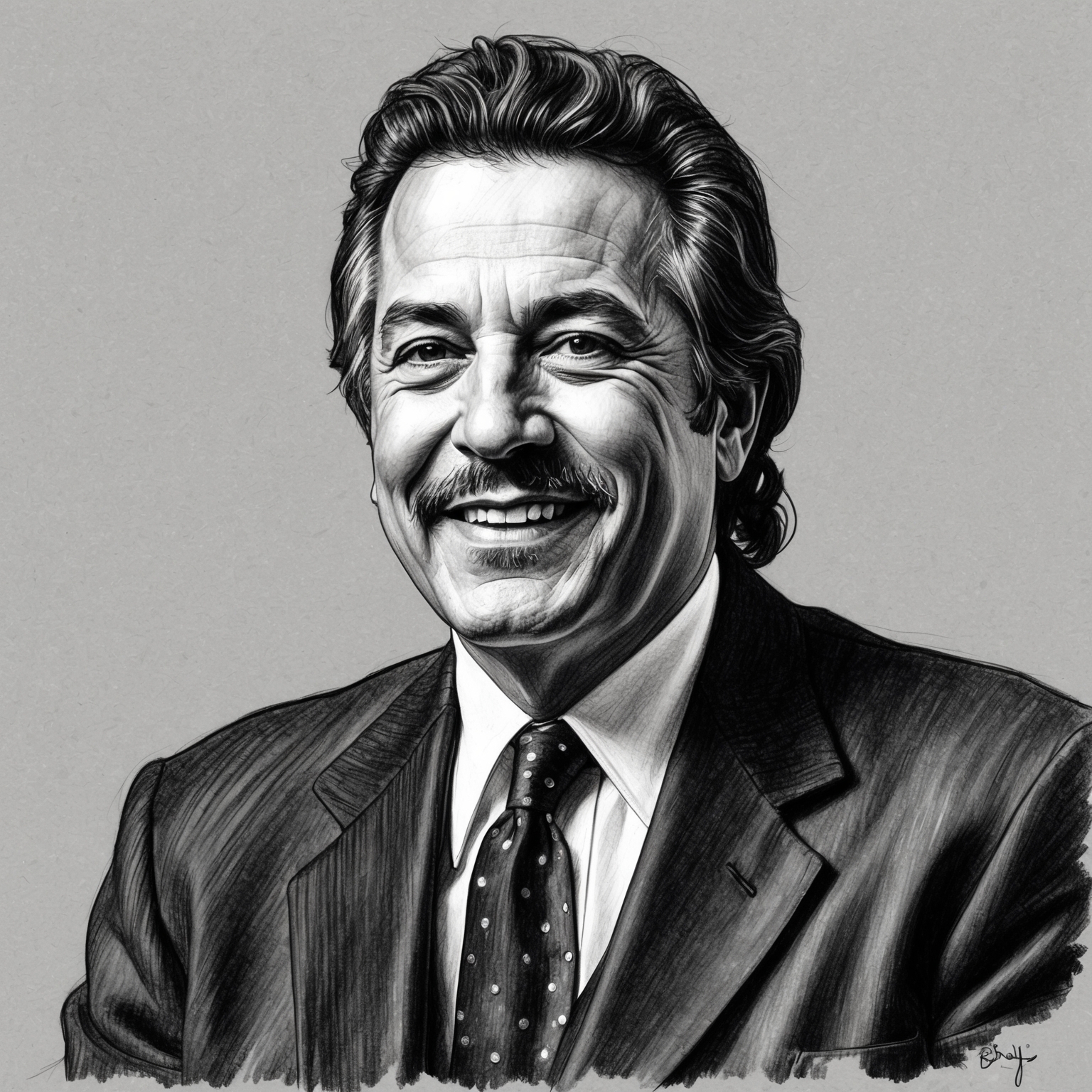
Billy Joel, often referred to as the ‘Piano Man’, is a monumental figure in the tapestry of 20th-century pop rock. Known for his storytelling through song, Joel’s ability to weave vivid narratives has left an indelible mark on the music industry. ‘Piano Man’, released in 1973, was not only a breakthrough single but also a reflection of his journey and experiences. The song’s candid portrayal of bar life introduced listeners to Joel’s unique perspective, instantly connecting with audiences craving authenticity and raw emotion.
Born on May 9, 1949, in The Bronx, New York, William Martin Joel was naturally inclined towards music. His early life was steeped in the rhythms of New York—dynamic, diverse, and undeniably passionate. Raised in Hicksville, Long Island, Joel began his musical journey with classical piano lessons, paving the way for his future as a self-taught rock and roll pianist. From these humble beginnings, Billy Joel’s career blossomed as he moved from local performances to becoming a worldwide sensation.
The era surrounding the release of ‘Piano Man’ was one of transition and exploration for Joel. After the initial struggle with previous bands like The Hassles and Attila, his solo career took a pivotal turn. The song was created during his stay in Los Angeles, where he performed in bars—a direct inspiration for this track. This period of his life was instrumental in shaping not only his career but also his philosophical approach to life and music. Collaborating with notable figures in the recording industry, Joel’s creative process often involved blending personal narratives with catchy melodies, a testament to his storytelling prowess. His interactions and sessions with seasoned musicians and producers further refined his craft, influencing his future projects and establishing Joel as a force in the music world.
The Musical Genius Behind ‘Piano Man’
Explore Billy Joel’s role as the composer of ‘Piano Man’, highlighting his eclectic musical style, influences, collaborations, and the unique blend of melody and lyrics that define this timeless classic.
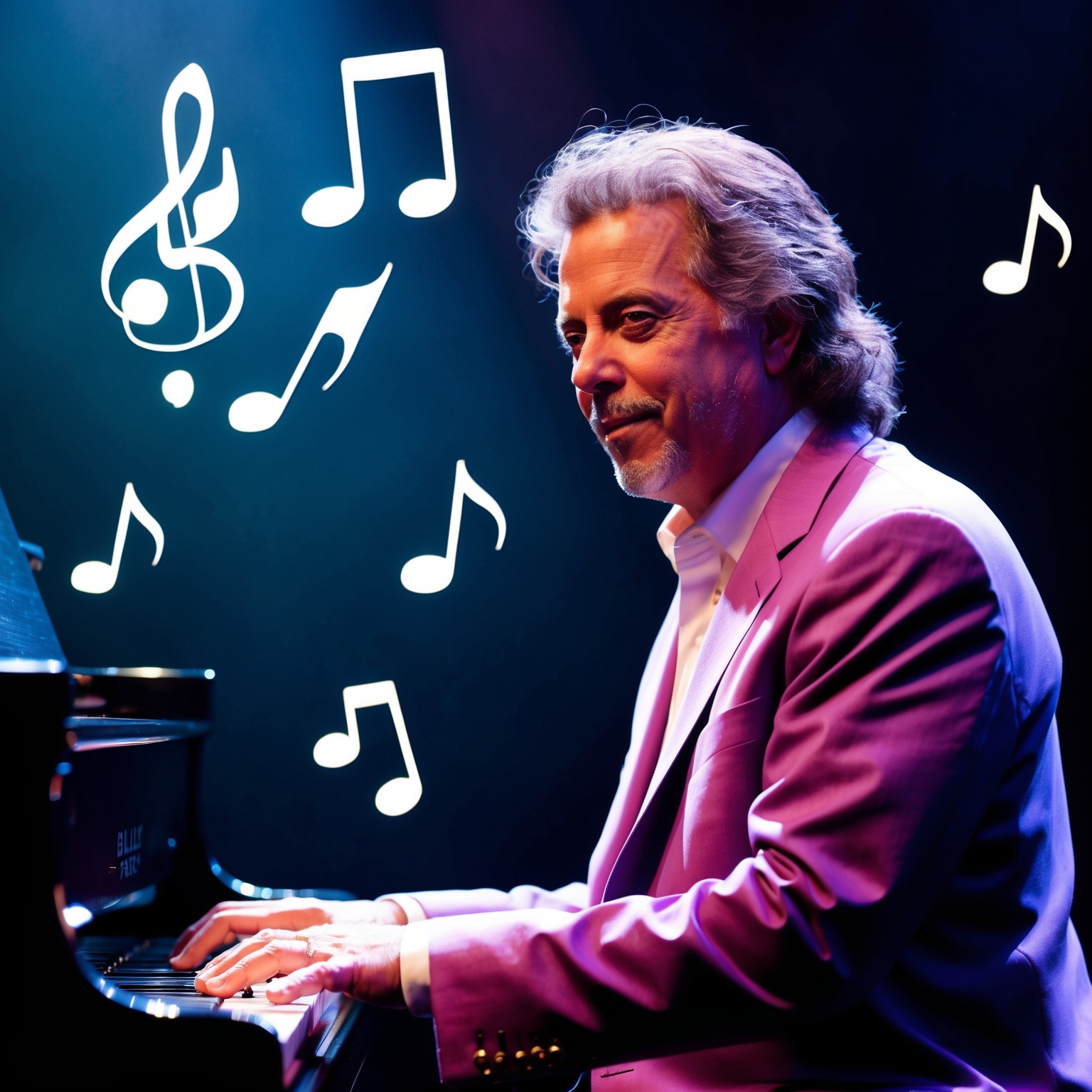
Billy Joel, the multifaceted musician behind the classic hit ‘Piano Man’, is not just the artist but also the composer of this iconic track. Known for his rich baritone and his ability to blend different musical elements, Joel’s background in classical music and years of performing in piano bars played an invaluable role in the creation of this song. Born in the Bronx, New York, Joel grew up in a musical family, nurturing his skills from a young age. His early career was marked by a dedication to his craft, often performing in small venues where experiences and characters he encountered would later permeate his work.
Joel’s musical style is an eclectic mix of pop, rock, jazz, and classical influences. This variety is evident in ‘Piano Man’, where storytelling through music takes center stage. Drawing inspiration from The Beatles, Ray Charles, and Beethoven, Joel’s songwriting exhibits a unique fusion that transcends traditional genre boundaries. His music often features complex piano arrangements complemented by poignant lyrics, a signature style that has made him a global icon.
Throughout his illustrious career, Joel has collaborated with a plethora of artists, adding more textures to his compositions. Though predominantly working individually, his collaborations have enriched his artistic output, showcasing the versatile nature of his music. With ‘Piano Man’, his role was multifaceted; he not only composed the melody but also crafted the lyrics, creating a harmonized interplay between tune and storytelling. Joel’s composition plays a pivotal role in its success, capturing the somber yet hopeful essence of life’s quiet moments through his masterful use of melody and narrative.
Celebrating the Legacy of ‘Piano Man’: Awards, Covers, and Appearances
Explore the legacy of ‘Piano Man’ through its awards, notable covers, and media appearances that cement its place in music history.
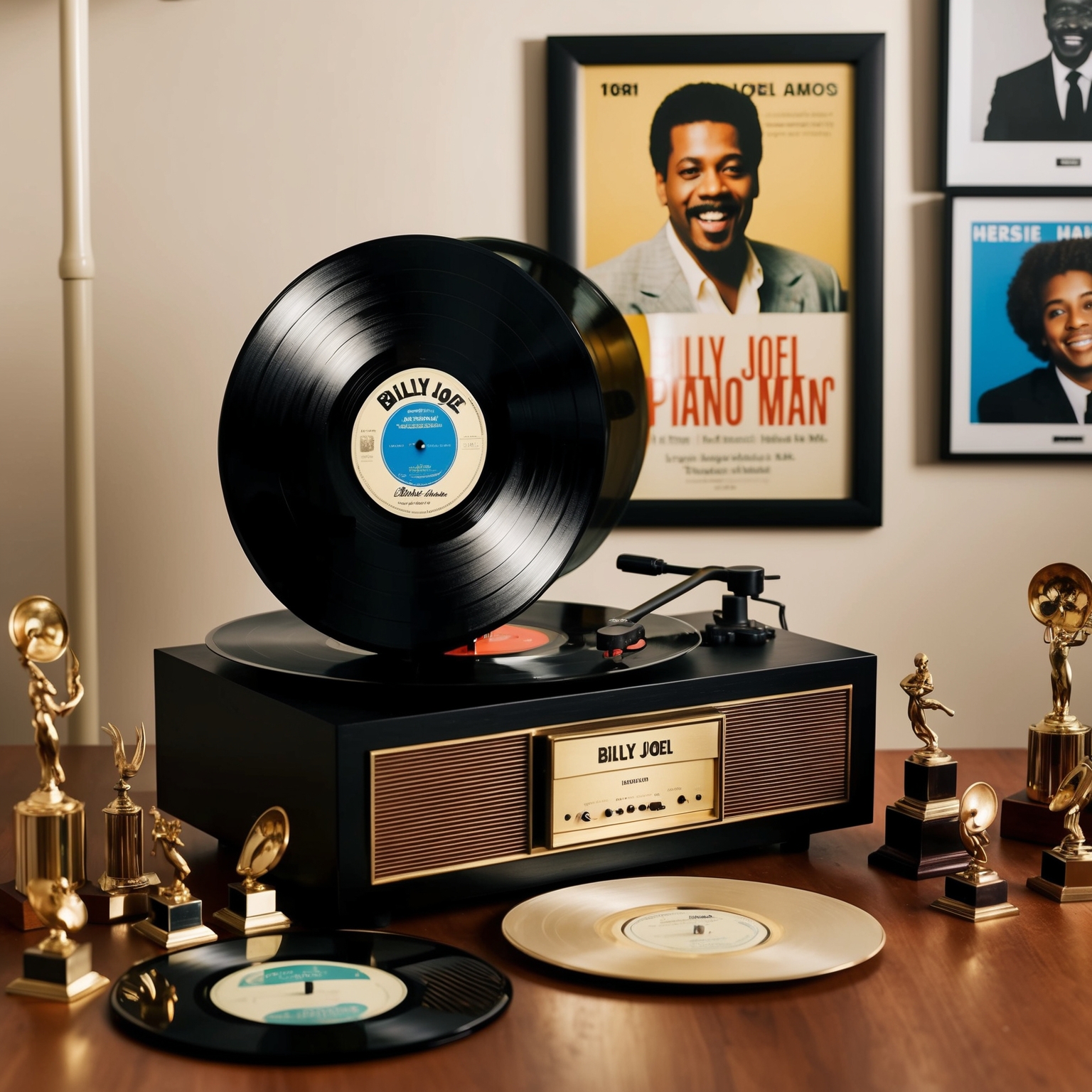
Billy Joel’s classic, “Piano Man,” has had a profound impact, resonating with audiences and inspiring musicians around the globe. Despite being released in 1973, the song’s popularity has not waned, achieving numerous accolades that emphasize its lasting significance. Over the years, “Piano Man” has earned its place in the Grammy Hall of Fame (in 1999), highlighting its importance in the tapestry of American music culture. It’s not just awards but also the song’s undeniable influence that marks its immense success.
The emotive storytelling of “Piano Man” has inspired numerous artists to cover this timeless tune. One of the most notable covers came from the popular American singer-songwriter Tori Amos, who brought her unique touch to the melody. Her rendition is renowned for capturing the soul of the original while infusing it with her distinct style. Legendary jazz musician Herbie Hancock also created a notable cover, transforming the song into a jazz-infused masterpiece, demonstrating the versatility and timelessness of Joel’s classic.
“Piano Man” has also made waves across various media platforms, reaffirming its influence beyond the world of music. The song has been featured in numerous films and TV shows, further cementing its role in popular culture. In movies like “Anchorman 2: The Legend Continues” and TV shows such as “The Office,” the song has served to evoke nostalgia and enrich narrative moments. By making appearances in various settings, “Piano Man” continues to be a cultural touchstone, connecting with audiences across generations.
Climbing the Charts: The Unexpected Journey of ‘Piano Man’
Explore how ‘Piano Man’ defied expectations, climbing the charts with its unique storytelling and becoming a breakthrough hit for Billy Joel.
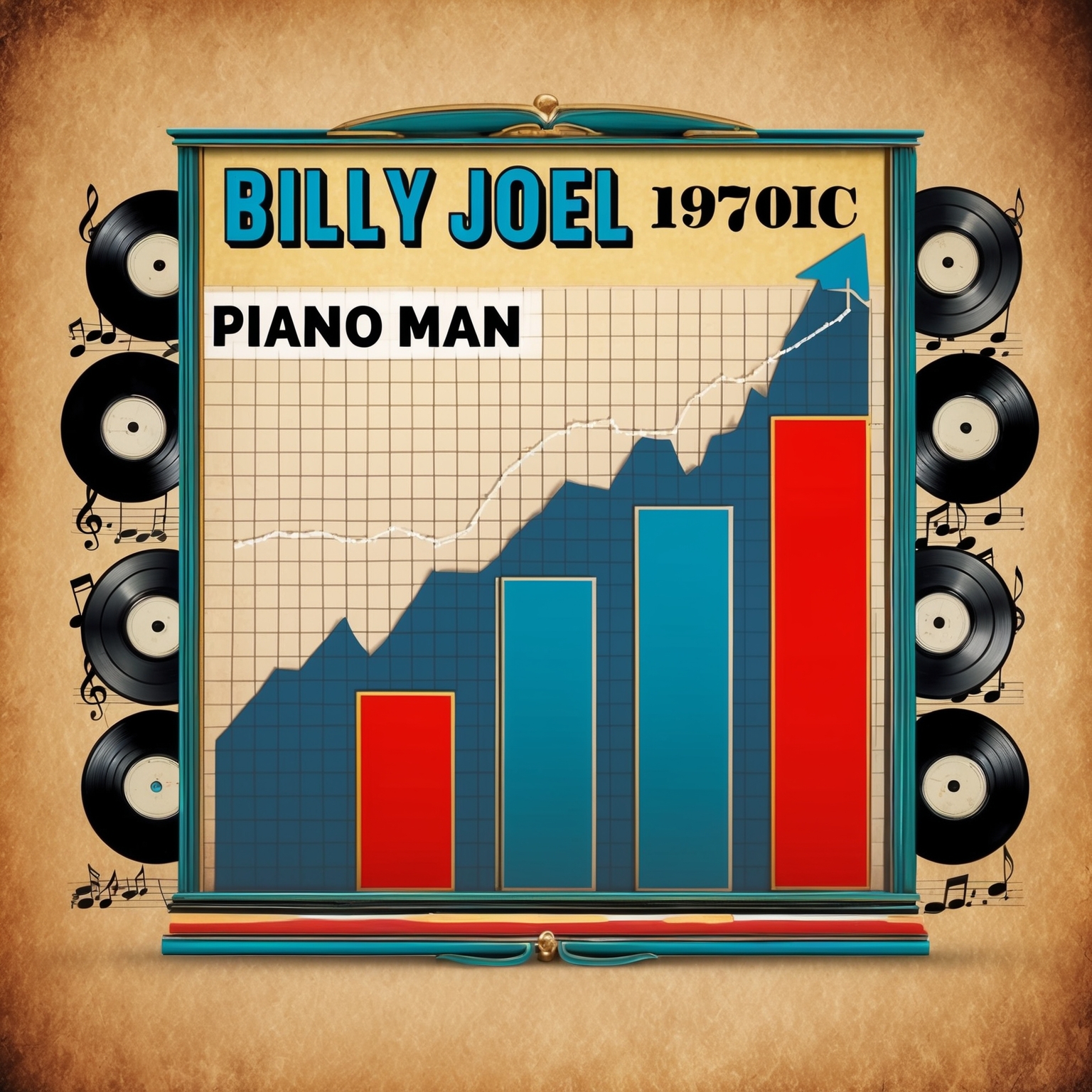
When Billy Joel’s iconic song ‘Piano Man’ was released in November 1973, it began its chart journey with modest expectations, as it was initially perceived as a rather niche offering. The track first graced the Billboard Hot 100 at position 92, reflecting its slow yet steady resonance with listeners. Its eventual peak at number 25, achieved in April 1974, marked a significant milestone for Joel, establishing him as a beloved storyteller in the music industry.
In comparison to its contemporaries on the charts, ‘Piano Man’ harnessed a unique narrative style that set it apart from other pop and rock hits of the era. While bands like The Eagles and artists such as Elton John dominated with catchy lyrics and upbeat rhythms, ‘Piano Man’ offered a soulful and introspective alternative, inviting listeners into the lives of colorful, everyday characters. This divergence from the mainstream not only created a new niche but also solidified Joel’s ability to weave tales through music, ultimately influencing his career trajectory in profound ways.
The commercial success of ‘Piano Man’ amounted to more than just chart positions. It acted as Joel’s breakthrough, pivoting him from an admired yet under-recognized artist to a household name. The promotion strategy, heavily reliant on live performances and radio play, emphasized the song’s storytelling appeal, a tactic that yielded remarkable results. Over time, it has cemented its legacy as a timeless classic, continuously discovering new audiences even in the streaming era, where platforms like Spotify and Apple Music showcase its enduring charm.
A Visual Jazz Bar Experience: Exploring the ‘Piano Man’ Music Visuals
Delve into the captivating world of ‘Piano Man’ through live performances and fan-made videos, reflecting the song’s intimate bar scene.

While Billy Joel’s iconic song ‘Piano Man’ does not have an official music video in the traditional sense, the track’s enduring legacy has inspired a myriad of fan-created visuals and live performance footage that further bring its storytelling to life. One of the most notable renditions is his stirring live performance on ‘Old Grey Whistle Test’ in 1975, which captures the essence of the song’s intimate bar setting.
This performance showcases Joel dressed sharply, delivering the song with dramatic emotion that engages the audience both visually and audibly. The intimacy of the set, complete with dim lighting and close-up shots, mirrors the song’s narrative of a quiet, reflective night at a local bar. This particular broadcast helped solidify Joel’s image as a master storyteller, making the audience feel simultaneously nostalgic and introspective, much like the patrons he describes in his song.
Fans themselves have taken to platforms like YouTube to craft their interpretations, often editing footage of smoky bars and pensive patrons to create unofficial videos that capture the essence of the sluggish Friday night depicted in the lyrics. These fan works have contributed significantly to the song’s popularity among new generations, ensuring ‘Piano Man’ remains a relatable anthem about the power of music and storytelling. Although these productions lack the star-studded appearances common in modern music videos, they resonate deeply due to their authenticity and heartfelt tributes to Joel’s timeless classic.
Dissecting the Musical Framework of ‘Piano Man’
A technical dive into Billy Joel’s “Piano Man,” dissecting its structure in terms of key, chord progression, tempo, and instrumentation, and its place within Joel’s musical evolution.
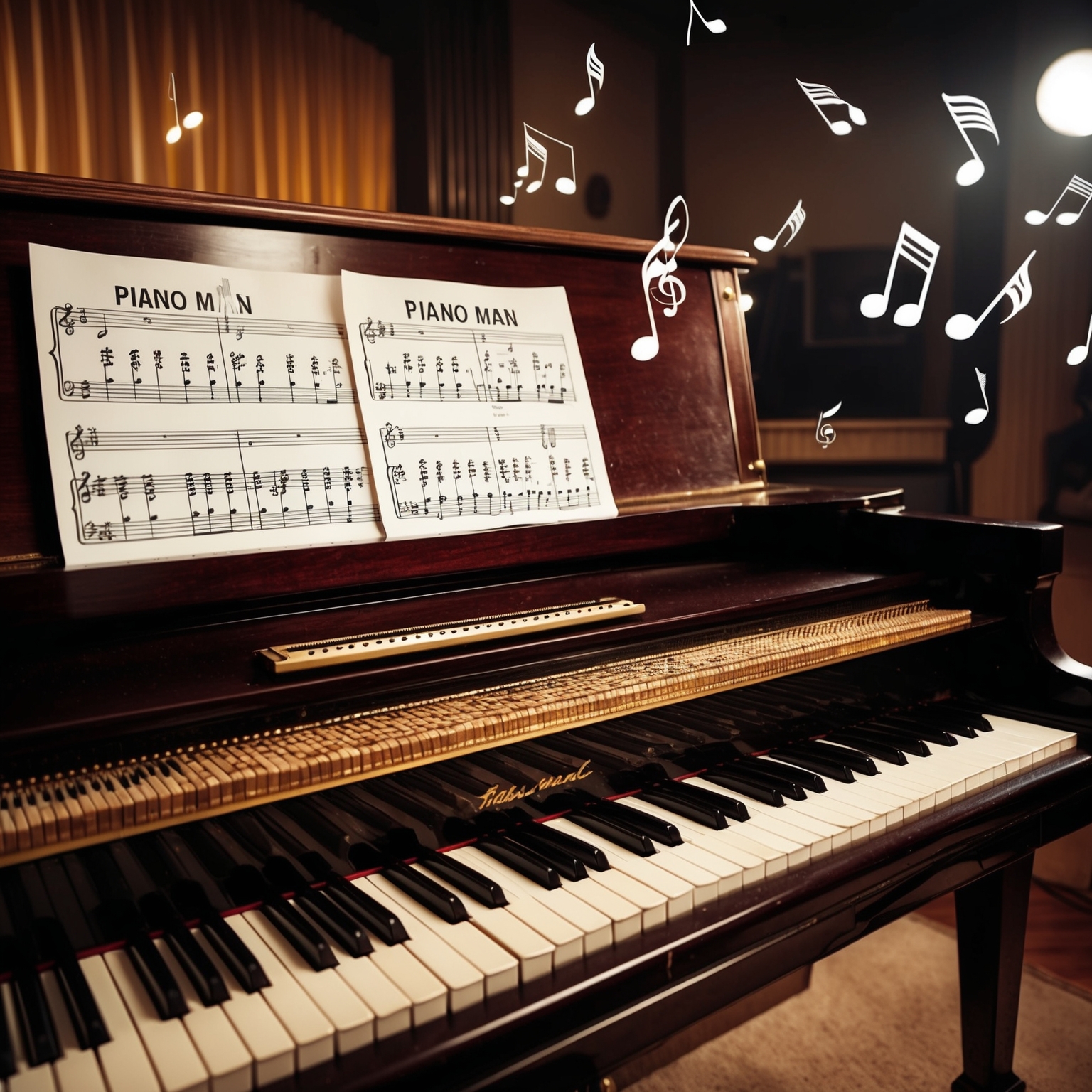
“Piano Man” by Billy Joel stands as an iconic piece of music, not only for its storytelling within the lyrics but also for its elaborate musical structure. The song is written in the key of C major, which provides a warm and open base, perfect for the ballad form it adopts. This key choice complements the narrative style of the lyrics, allowing the song to connect deeply with listeners through a simple yet expressive melody.
The chord progression in “Piano Man” follows a traditional structure with a cyclical feel, playing around with basic chords that offer a sense of familiarity. The tempo is set at a moderate pace, enhancing the reflective and nostalgic mood that Billy Joel captures so vividly. With harmonics that are soothing and rhythm that progresses steadily, the song easily evokes emotions of longing and introspection.
The instrumentation used in the song significantly contributes to its unique sound. The piano takes the central stage, with Billy Joel’s adept skills shining through in every note. The harmonica interjects at key moments, augmenting the folk-inspired vibe of the song, while the bass and drums lay down a steady framework that keeps the storytelling anchored. The combination of these instruments delivers a sonic experience that feels both intimate and expansive.
When placed within Billy Joel’s discography, “Piano Man” is a classic, marking a pivotal moment in his career. Prior to this, Joel’s work had not reached the same zenith of storytelling elegance and musical cohesion. The song signifies a maturation in his artistic direction, as it bridges the gap between his earlier works and the more sophisticated albums that followed. Its balance of lyrical depth and melodic engagement prefigures the thematic richness and musical innovation that would become hallmarks of his subsequent compositions.
During its recording, “Piano Man” was brought to life at the Devonshire Sound Studios in Los Angeles. Produced by Michael Stewart, the recording sessions were punctuated with stories from Joel’s own experiences, inspiring much of the song’s narrative. Anecdotes from the studio often highlight the spirited yet insightful environment that helped shape this enduring masterpiece.
Exploring the Depths of ‘Piano Man’: A Lyric Examination
Billy Joel’s ‘Piano Man’ masterfully uses narrative and literary devices to explore themes of nostalgia, longing, and connection among bar patrons, resonating with audiences for decades.
The regular crowd shuffles in
There’s an old man sittin’ next to me
Makin’ love to his tonic and gin
He says, “Son can you play me a memory?
I’m not really sure how it goes
But it’s sad and it’s sweet and I knew it complete
When I wore a younger man’s clothes”
La, la-la, di-di-da
La-la di-di-da da-dum
Sing us a song, you’re the piano man
Sing us a song tonight
Well, we’re all in the mood for a melody
And you’ve got us feelin’ alright
Now John at the bar is a friend of mine
He gets me my drinks for free
And he’s quick with a joke, or to light up your smoke
…
******* This Lyrics is NOT for Commercial use *******
 Piano Man by Billy Joel stands out as a beautifully woven narrative, enveloping listeners in a unique experience that blends poignant storytelling with engaging lyrical craft. The essence of the song revolves around the lives and dreams of everyday people gathered in a bar, united by their collective need for escapism and solace. At its core, the lyrics touch on themes of nostalgia, longing, and camaraderie, resonating deeply with audiences across generations.
Piano Man by Billy Joel stands out as a beautifully woven narrative, enveloping listeners in a unique experience that blends poignant storytelling with engaging lyrical craft. The essence of the song revolves around the lives and dreams of everyday people gathered in a bar, united by their collective need for escapism and solace. At its core, the lyrics touch on themes of nostalgia, longing, and camaraderie, resonating deeply with audiences across generations.
In detailing the lives of the bar’s patrons, Joel crafts a vivid story filled with rich imagery and depth. The opening lines immediately set the scene: “It’s nine o’clock on a Saturday/The regular crowd shuffles in”. Such imagery transports the listener into this intimate world, introducing characters like the old man reflecting on his youth and John at the bar, bringing humor and lightness to the setting. This narrative style, delivered from a first-person perspective, not only immerses listeners into the environment but also creates a sense of shared experience and familiarity.
Throughout the song, Joel’s use of literary devices such as metaphors, alliteration, and rhyme schemes enhances its lyrical and emotional quality. For instance, the phrase “makin’ love to his tonic and gin” vividly conveys the old man’s attachment and longing for past memories. Meanwhile, the simple yet effective rhyming structure, especially in the recurring “la-la, di-di-da” refrain, echoes the melodic staple of a sing-along, inviting audiences into the narrative.
The song’s cultural and social references provide an additional layer of depth. By depicting the various dreams and disappointments of the bar’s patrons against the backdrop of a simple, relatable setting, the lyrics tap into universal themes of human existence and yearning for connection. This has undoubtedly contributed to the song’s enduring appeal, allowing people from different walks of life to find a piece of themselves in the lyrics.
Overall, the lyrical craftsmanship in Piano Man not only tells a compelling story but does so with elegance and nuance, solidifying its place as a timeless classic in Billy Joel’s repertoire and in the hearts of listeners worldwide.
? Did you know ‘Piano Man’ was inspired by Billy Joel’s own experiences performing at a piano bar in Los Angeles? ? Dive into the iconic tale of patrons & their dreams! ? #PianoMan #BillyJoel #MusicTrivia #70sHits https://bit.ly/3G7PfGL
Click to Tweet

